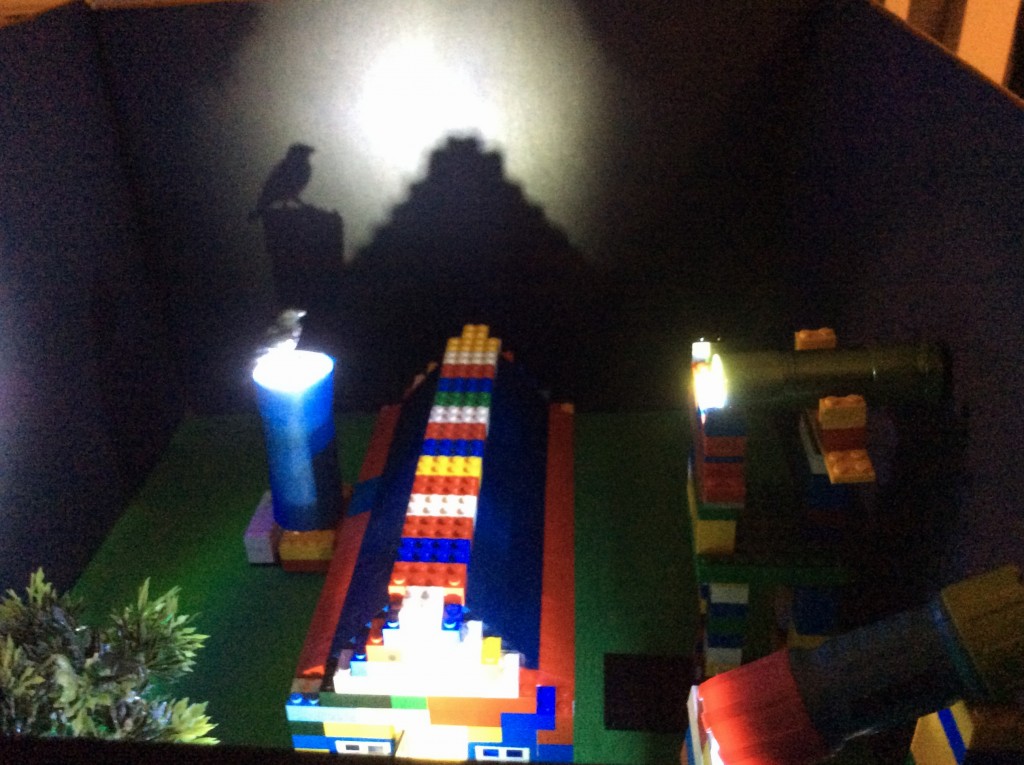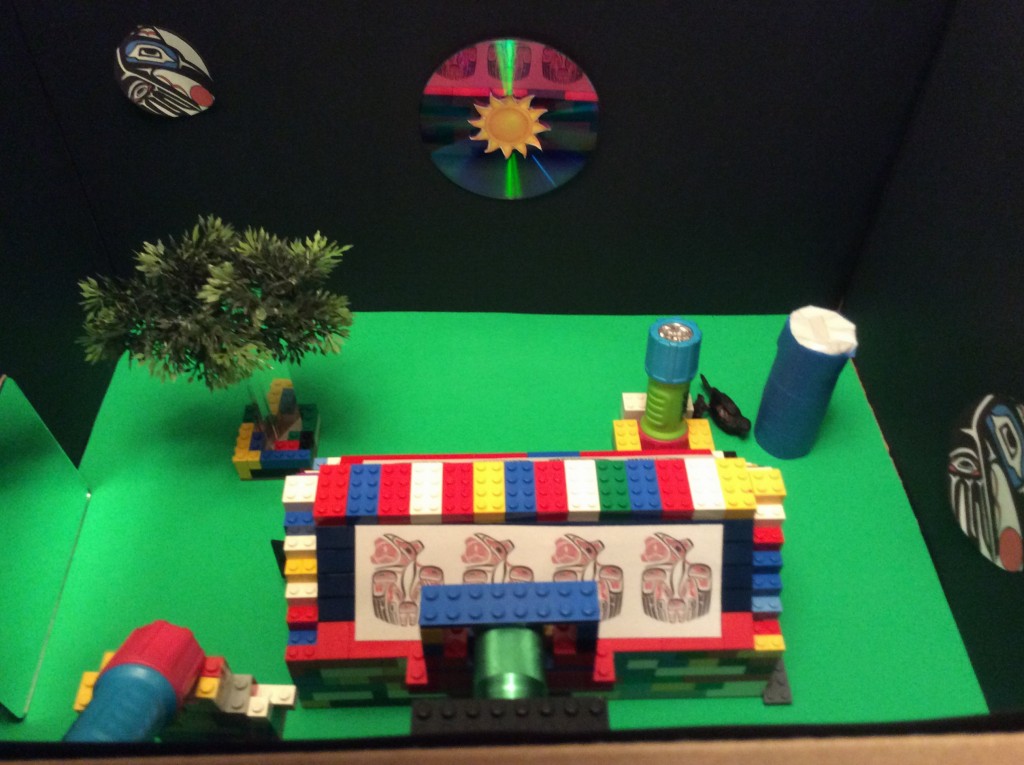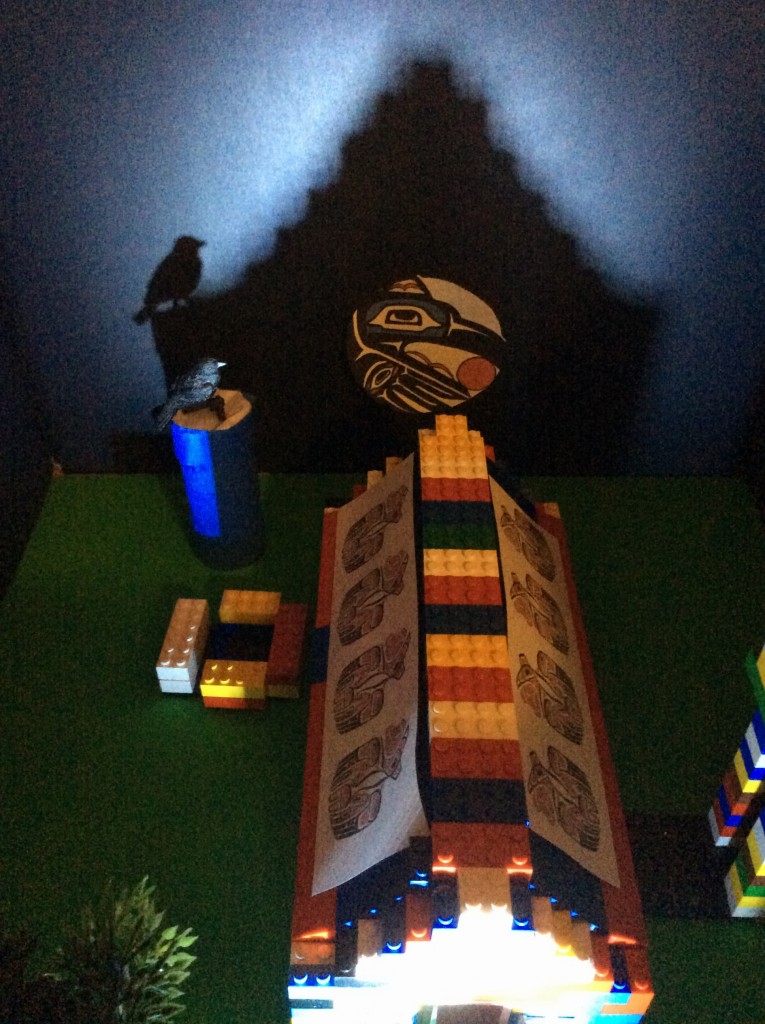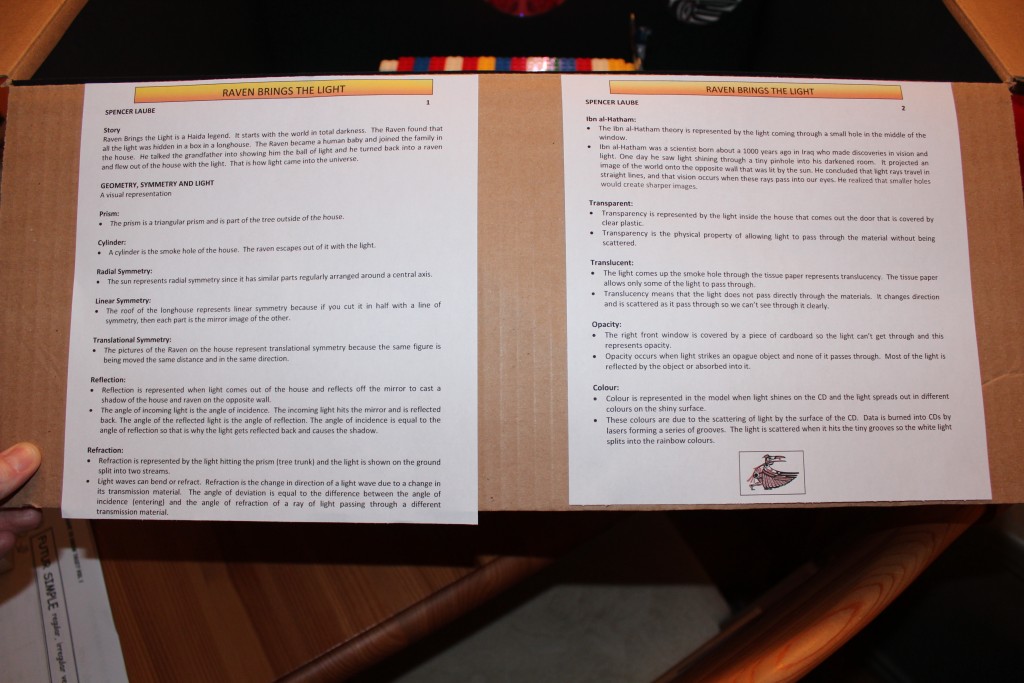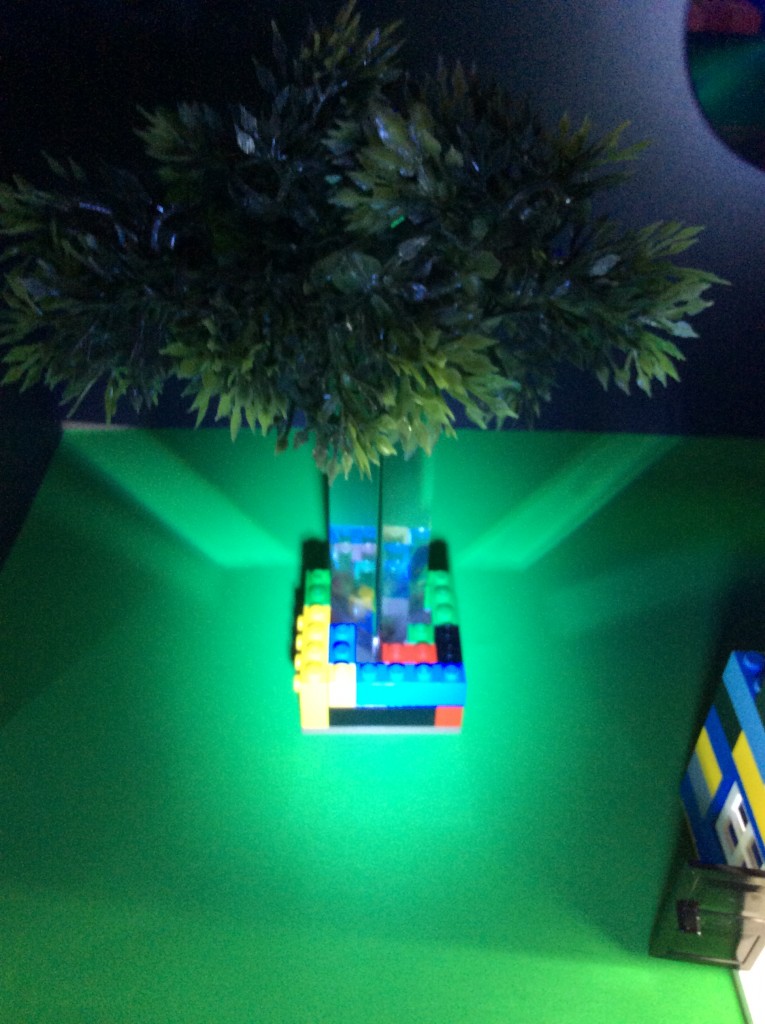Goal: Our project was to construct a visual representation of Geometry, Symmetry and Light. The theme was “How the raven brings the light”. We needed to include light (opacity, translucency, transparency, colour, reflections and refractions and Ibn al-Hatham) and include symmetry (like radial and bilateral) and geometry shapes (like prisms and cylinders).
Construction: Since it was a Haida legend, I decided to use Lego to build a Haida longhouse with a smokehole, a raven, a sun and a prism tree. I included the Raven brings the Light story, opacity, translucency, transparency, colour, reflections and refractions and Ibn al-Hatham, symmetry (radial, translational and bilateral) and geometry shapes (prisms and cylinders). The following explains how I included them and the definitions. I included these descriptions as part of my display.
Raven Brings the Light Story posted on the display: Raven Brings the Light is a Haida legend. It starts with the world in total darkness. The Raven found that all the light was hidden in a box in a longhouse. The Raven became a human baby and joined the family in the house. He talked the grandfather into showing him the ball of light and he turned back into a raven and flew out of the house with the light. That is how light came into the universe.
Geometry: Prism: The prism is a triangular prism and is part of the tree outside of the house. Cylinder: A cylinder is the smoke hole of the house. The raven escapes out of it with the translucent light.
Symmetry: Radial Symmetry: The sun has radial symmetry since it has similar parts regularly arranged around a central axis. Linear Symmetry: The roof of the longhouse represents linear symmetry because if you cut it in half with a line of symmetry, then each part is the mirror image of the other. Translational Symmetry: The pictures of the Raven on the house represent translational symmetry because the same figure is being moved the same distance and in the same direction.
Light: Reflection: Reflection is represented when light comes out of the house and reflects off the mirror to cast a shadow of the house and raven on the opposite wall. The angle of incoming light is the angle of incidence. The incoming light hits the mirror and is reflected back. The angle of the reflected light is the angle of reflection. The angle of incidence is equal to the angle of reflection so that is why the light gets reflected back and causes the shadow. Refraction: Refraction is represented by the light hitting the prism (tree trunk) and the light is shown on the ground split into two streams. Light waves can bend or refract. Refraction is the change in direction of a light wave due to a change in its transmission material. The angle of deviation is equal to the difference between the angle of incidence (entering) and the angle of refraction of a ray of light passing through a different transmission material. Ibn al-Hatham: The Ibn al-Hatham theory is represented by the light coming through a small hole in the middle of the window. Ibn al-Hatham was a scientist born about a 1000 years ago in Iraq who made discoveries in vision and light. One day he saw light shining through a tiny pinhole into his darkened room. It projected an image of the world onto the opposite wall that was lit by the sun. He concluded that light rays travel in straight lines, and that vision occurs when these rays pass into our eyes. He realized that smaller holes would create sharper images. Transparent: Transparency is represented by the light inside the house that comes out the door that is covered by clear plastic. Transparency is the physical property of allowing light to pass through the material without being scattered. Translucent: The light comes up the smoke hole through the tissue paper represents translucency. The tissue paper allows only some of the light to pass through. Translucency means that the light does not pass directly through the materials. It changes direction and is scattered as it pass through so we can’t see through it clearly. Opacity: The right front window is covered by a piece of cardboard so the light can’t get through and this represents opacity. Opacity occurs when light strikes an opague object and none of it passes through. Most of the light is reflected by the object or absorbed into it. Colour: Colour is represented in the model when light shines on the CD and the light spreads out in different colours on the shiny surface. These colours are due to the scattering of light by the surface of the CD. Data is burned into CDs by lasers forming a series of grooves. The light is scattered when it hits the tiny grooves so the white light splits into the rainbow colours.
I liked doing this project and I learned a lot. I liked the Haida story but it took me a while to figure out how to show all these geometry, symmetry and light terms. At first I described how they were set up in the box and then I got feedback to add in the definitions so I added that next. I learned about Ibn al-Hatham when we made the camera. It was hard to transport to school and the lego totem pole was hard to keep together. I thought a couple of things worked well. One thing was the raven sitting on the chimney that had light shining up. Another was the reflection of the house and the raven on the back wall. The tree prism split up the light well. They needed darkness to show up clearly so the best thing was using the CD to make the sun out of because you could see the light colours even if it wasn’t too bright.
Here are some more photos to show you the work in progress and parts of the finished project.
